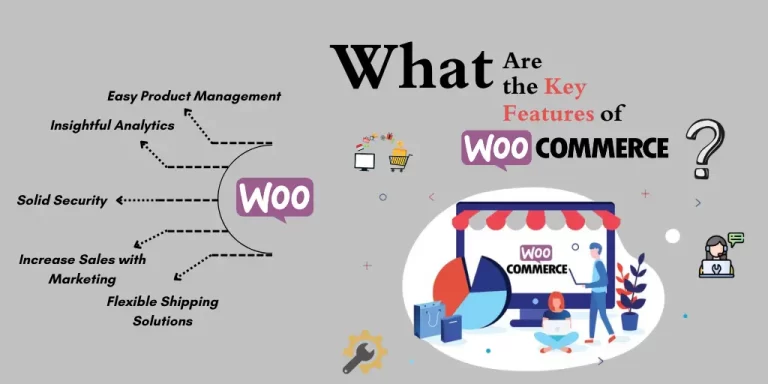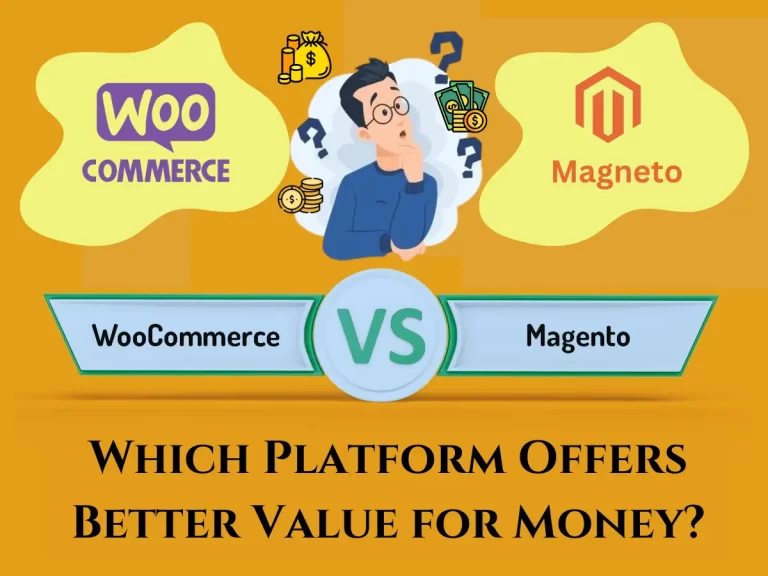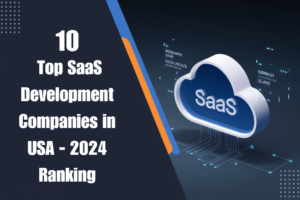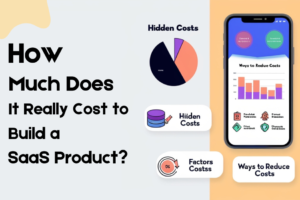Magento vs WooCommerce: Which one is better?

Table of ContentsToggle Table of ContentToggle
Why is Choosing the Right Ecommerce Platform Crucial for Your Business?
Step into the ecommerce Choosing the right platform is like choosing the right car for that long road trip. Of all, WooCommerce vs magento are the superheroes, braggart of some great features and high flexibility – both shine in different ways, aimed at various scales of business and needs.
Think of Magento like a big, fully Terrain SUV, constructed for big enterprises that often need serious performance and limitless personalization. For small- and medium-sized businesses, WooCommerce does pretty much what this slick, user-friendly hatchback is looking for: an easy ride with no hassle during setup. Moreover, it is this particular something that has made both these platforms stand out in their own right.
What is WooCommerce and Why Should You Consider It?
WooCommerce isn’t just any regular plugin it’s like your magic wand for turning a basic WordPress website into a vibrant online store. Created back in 2011 by Woo Themes. It presently serves over 28.19% of all online retailers. It was this ecommerce powerhouse that quickly won users over by dint of how easy it is to set up, the tons of ways to customize, and how smoothly it works with WordPress. You start with a basic site on WordPress. Boom! Right in just a few clicks, and you are armed with powerful online stores capable of handling everything from listing products to secure payment. WooCommerce makes it all happen with its simple dashboard where you can manage products, set up payment options, tweak how your store looks, and add new features using lots of plugins.
But the very cool thing about WooCommerce is its flexibility. Selling physical stuff, digital downloads, or even subscriptions it gives you the ability to make your store fit exactly what you need with ease. It’s like having a store custom-made for you and able to grow right with your business. It won’t give you headaches.
What is Magento (Adobe Commerce) and How Does It Stand Out?
Magento is, without a doubt, one of the powerhouses in the ecommerce world. One could compare it to a sports car in terms of luxury for online stores because of the abundance of advanced features, high customizability, and the ability to form high-performance websites. Launched in 2008, Magento has grown over time as a strong platform that services businesses of any size. More than 170.000 websites run on one of these Magento. Large enterprise businesses with complex requirements are the ones the platform shine most when paired with.
Why the Comparison?
You want to begin building the very foundation of your online business using the correct ecommerce platform. Just as there is a great tool for every distinct job, what distinguishes each platform includes strengths and features for varied needs. Amidst the ever-stirring waters within ecommerce solutions, there clearly emerge two supreme contenders: Magento vs WooCommerce, offering different advantages that best satisfy manifold business requirements.
WooCommerce Overview
How Did WooCommerce Evolve Over the Years?
What Are the Key Features of WooCommerce?

What’s more, with WooCommerce, companies have perfect options for the creation, management, and growth of a successful online store.
Easy Product Management: Listing, categorization, and customization of products with variations and product descriptions.
Integrated Secure Payment Gateways: It seamlessly integrates with most popular payment options, such as PayPal and credit cards, so transactions are smooth and completely secure.
Flexible Shipping Solutions: Calculate with, in real-time, shipping cost on the basis of customer location, size, and weight of products to give reliable delivery options.
Smart Inventory Control: Never out-of-stock for a hot-seller; get instant alerts when stock levels change, and manage attuned to avoid going out of stock.
Insightful Analytics: Gain insightful knowledge on consumer behavior, sales trends, and store performance to help you make informed decisions.
Increase Sales with Marketing: Run promotions and discounts, target email campaigns independently right from your store, and watch customer engagement spur more sales.
Extend Easily: Tap into a huge library of extensions and integrations to take your store further with such things as accounting and CRM.
Solid Security: Know that customer data is secure, and trust has been earned, with our security measures adhering to the best practices for online payments.
How Easy is WooCommerce to Use for Beginners?
The ease of use in WooCommerce, added to its power and community support, makes it the best for beginners to get started and handle their first online store with great efficiency.
Easy Onboarding: WooCommerce offers an onboard, guided setup wizard that will walk you through configuring basic store settings, thus making the first setup very easy and intuitive.
User-Friendly Interface: The user interface is user-friendly and easy to use, with just one central dashboard for the management of products, orders, and customers hassle-free.
Product Management: Adding a new product and editing this portion is easy, with the ability to add descriptions, images, prices, and inventory management features like stock tracking and low-inventory alerters.
Customization Options: Personalize your store design and extend its functionality using a huge number of free and paid themes and extensions available in the WooCommerce marketplace to have the store oriented with the brand values and business expectations.
Support and Community: WooCommerce has an active community of users, developers, and resources supporting it, which makes it very easy for any beginner to dive in—one full of extensive documentation, forums, and support channels, where one can learn the ropes and even troubleshoot common issues.•
Magento Overview
Magento, now known as Adobe Commerce, is an ecommerce powerhouse and is valued over all others for its robustness and scalability. For any size of business, it is one of the main platforms that provides a complete toolset and feature set for building and management of an online storefront. What makes this platform perfect to fit individual and complex business needs with customizations is the fact that it is open source and allows extensive customization.
Magento excels at hosting large operations with a huge volume of traffic and extensive catalogs of products. As is well known, the flexibility and advanced capabilities make it seamlessly integrate into Adobe’s suite of marketing tools—providing an all-rounded approach to e-commerce. With this in mind, businesses looking to harness the power within this platform find expert Magento developers at the center of everything.
These bring all the competencies related to efficient website development on Magento and thus ensure optimization at every corner of an online store against specific business goals. With its bundle of powerful features and customization options, Adobe Commerce continues to top the lists of businesses looking to create dynamic and scalable online retail experiences.
What is the History Behind Magento's Development?
The first version of Magento was released in 2008 by the US business Varien, Inc. It had built quite a reputation among circles involved in e-commerce even before it was complete in 2007, due to its flexibility and comprehensive set of features. The official release in March 2008 was a turn for the online stores since that empowered businesses to craft extremely customized shopping experiences.
2011 finally saw the promise of Magento come to the attention of eBay, which first took a 49% stake before acquiring the company outright. That deal folded Magento into eBay’s X.commerce initiative, thereby bringing it a massive injection of both resources and exposure.
Its real makeover masterstroke came in 2015, though, when eBay spun out its ecommerce assets and resold the latter to Permira, a private equity firm.The same year, Magento 2.0 was released with an entirely new modern architecture, performance boost, and better scalability of the platform.
The most paramount milestone for Magento came in 2018 when it was acquired by Adobe for a whopping $1.68 billion. It was an event that combined the power of Magento ecommerce offering with the Experience Cloud from Adobe. In this way, a suite of digital marketing tools would be provided. Since then, Magento has only continued to further innovate under the wing of Adobe in improving the user experience, enhancing performance, and integrating smoothly with other products from Adobe. The open source community is equally very active and instrumental in its continuous improvement and innovations.
From its modest beginnings to the positioning of one of the cornerstones in the digital ecosystem of Adobe, Magento’s is a story rife with constant evolution and impact in the ecommerce space. It’s this unique blend in flexibility, customisation and robust features of it that really places Magento at very top of online retail solutions.
What Key Features Make Magento a Powerful Ecommerce Platform?
Advanced Product Management
Manage even the most complicated product catalogs with configurable products, bundles, custom options—everything you need to enable your store to show as much as possible in the best ways.
Scalability
Built to support large-scale operations, Adobe Commerce can effortlessly manage thousands of products and handle high traffic volumes, making it perfect for growing businesses.
Customization
With extensive customization options available through themes, extensions, and custom development, you can tailor every aspect of your online store to meet your specific needs and create a unique shopping experience.
Multi-Store Management
Easily manage multiple stores from a single backend. Adobe Commerce allows you to share or separate customer and product information as needed, streamlining operations and enhancing efficiency.
SEO Tools
Boost your store’s visibility and ranking with built-in SEO tools. These features help ensure your products are easy to find and attract more organic traffic to your site.
Analytics and Reporting
Gain deep insights into your business with comprehensive analytics and reporting tools. Monitor sales performance, customer behavior, and other key metrics to make informed decisions and drive growth.
Marketing and Promotions
Run effective marketing campaigns with advanced tools designed for creating discounts and promotions. Engage customers and drive sales with targeted offers and marketing strategies.
Security
Ensure safe transactions and protect customer data with robust security features. Adobe Commerce prioritizes security to maintain customer trust and comply with industry standards.
Integration with Adobe Products
Seamlessly integrate with Adobe Experience Cloud to enhance your marketing, analytics, and personalization capabilities. This integration provides a powerful, cohesive approach to managing your online business.
Global Support
Expand your reach with support for multiple languages, currencies, and tax rates. Adobe Commerce is equipped to handle the complexities of international business, making it a truly global platform.
Comparison at a Glance
What Are the Key Differences Between WooCommerce vs Magento?
Choosing between WooCommerce vs Magento depends largely on your business needs and technical capabilities. WooCommerce is ideal for beginners and smaller businesses looking for an easy-to-use, cost-effective solution integrated with WordPress. In contrast, Magento caters to larger businesses with complex requirements, offering unparalleled customization and scalability. Both platforms have their strengths, and understanding these key differences can help you make an informed decision for your eCommerce venture.
Ease of Use
The WooCommerce platform is a breeze for beginners and integrates seamlessly with WordPress, making it an excellent choice for those already familiar with the CMS. On the other hand, Magento is more powerful but requires technical knowledge to navigate, often necessitating the help of skilled Magento developers for optimal use.
Scalability
In the debate of Magento vs WooCommerce, Magento stands out for large-scale operations with complex needs. It is built to handle extensive product catalogs and high traffic volumes, making it a go-to for bigger businesses. While WooCommerce development allows for scalability, it is generally better suited for small to medium-sized enterprises.
Customization
Both WooCommerce vs Magento offer extensive customization options. However, Magento provides deeper customization through its wide range of Magento extensions and advanced settings, which are ideal for complex requirements. WooCommerce also offers flexibility, but it might not match the level of intricate customization that Magento website development can achieve.
Performance
Performance-wise, Magento is optimized for large stores with high traffic, ensuring smooth operation even under heavy loads. WooCommerce performance, however, can heavily depend on the hosting environment. With the right hosting and optimization, WooCommerce development can yield fast and reliable performance for small to medium-sized stores.
Quick Comparison Table: WooCommerce vs Magento
Cost
How Much Does It Cost to Run a WooCommerce Shop?
The include costs of running a store on WooCommerce are categorized under a few major heads.
1. Hosting: WooCommerce is only a plugin for WordPress and hence requires web hosting. While most by default go with basic shared hosting plans starting at $3-$10 per month, one would eventually see an increase in visitors to their store and may require either VPS or dedicated hosting, which ranges from $20 to $100+ per month.
2. Domain Name: The cost of a domain name is normally $10-$15 yearly.
3.Themes and Plugins: While tons of themes and plugins are free, some premium themes will run approximately $20-$100 dollars and premium plugins from $20 to $200 each. Some plugins may also need you to pay subscription fees for continued updates and support.
4.SSL Certificate: Witnessing how secure transactions go, SSL takes $10-$100 per year. Some hosting providers incorporate SSL for free.
5. Payment Gateway Fees: Payment processors like PayPal Stripe charge transaction fees of about 2.9% + 0.30 $ per transaction.
6. Development and Maintenance: It’s quite user-friendly, but you might want to hire someone to do additional WooCommerce development. The pricing may vary from $20-150+ per hour according to their complexity.
7. Marketing and SEO: Optional marketing tools, SEO plugins, or advertising to drive traffic to your online store.
What Costs Should you Have Expected with Magento?

The cost behaviour of running a Magento store is varied, especially for the open source version. Here are the differences in cost.
implications:
1. Hosting: Magento requires a strong resource-rich hosting. It is good to go for dedicated servers or cloud hosting solutions. These could cost anywhere between $50-$300+ a month.
2. Domain Name: This comes pretty much at par with WooCommerce. Registration for a domain name usually costs around $10-$15 annually.
3. Extensions and Themes: Magento extensions and themes can be more expensive. Many premium themes have a price tag of $100–$300, with extensions ranging from $50 to $500+.
4. SSL Certificate: The SSL certificate is something required; it usually costs $10–$100 annually, although some hosts offer it for free.
5. Payment Gateway Fees: These are also roughly the same as WooCommerce, often coming in at about 2.9% + $0.30 per transaction for PayPal and Stripe.
6. Development and Maintenance: One of the reasons that makes Magento often require professional development is the complexity involved. Development prices for Magento websites range from $50 to $200+ per hour. Digital Enterprise-level customization and ongoing maintenance raise the cost significantly.
7. Enterprise Edition: Magento provides a paid Enterprise edition, which runs around $22,000 per year (Adobe Commerce) and is targeted towards big business customers with its advanced features and support.
Which Platform Gives Better Value for Money?

Which one gives value for money between WooCommerce and Magento depends on your business needs.
1. Small to Medium-Sized Business:
The WooCommerce platform is generally more cost-effective. With lower setup and maintenance costs, it is more ideal for a smaller business or those who have experience working with the WordPress platform already.
2. Large Businesses with Complex Needs:
Magento offers way more advanced features, scalability, and customization than Shopify, and is well worth the investment for larger businesses. While its upfront and ongoing costs are considerably higher, it really shines in the ability to handle extensive product catalogs and large traffic volumes.
Web Hosting Requirements for WooCommerce
As WooCommerce is a WordPress plugin, the hosting requirements are the same as what is required to run WordPress. Here’s information to help you know how to ensure optimal performance for your WooCommerce store.
Server Requirements
PHP — Version 7.4 or higher
MySQL — Version 5.6 or higher or MariaDB version 10.1 or higher.
HTTPS: As safe transactions are processed, it is essential that it be supported.
Hosting Environment:
Small-to-Medium-Sized Store: Shared Hosting. Plans start from $3-$10/month and are really very affordable. It’s also easy to set up.
• Large Store:
VPS or Dedicated Hosting. Recommended for large stores for added performance and reliability; will run between $20 – $100+ per month.
Performance Considerations:
•Caching Plugins: Enhance load occasions using WP Super Cache or W3 Total Cache plugins.
• Content Delivery Network: CDNs improve page speed and performance.
• Scheduled Backups: Periodic backups so that your data is safe.
System Requirements for Magento Web Hosting
Magento, being a resource-intensive platform, requires robust hosting solutions to perform at their best. Server requirements are as follows –
PHP : Version 7.4 or higher
MySQL: Version 5.7 or higher, or MariaDB version 10.2 or higher.
Elasticsearch: To provide robust search capabilities
HTTPS: Providing secure transactions
Hosting Environment:
Dedicated Servers or Cloud Hosting: These will be essential in the handling of large-scale operations and high traffic volumes.Here, I’ll recommend some of them: AWS, Google Cloud, or simply dedicated hosting providers. These come basically at a price range of $50 to $300+ a month.
Optimized Magento Hosting Providers: Providers like Nexcess, Cloudways, and SiteGround who provide hosting specifically optimized for Magento, hence making setup and management easy.
Performance Consideration:
1. Varnish Cache: Setting up Varnish for full-page caching.
2. Redis or Memcached: Storing sessions and cache.
3. CDN: Use CDNs to improve the speed of content delivery.
4. Regular Maintenance: Keep upgrading and optimizing your Magento store to get the best performance.
Which one is better in Terms of Performance?
If you consider both WooCommerce and Magento with regard to performance, then it all comes to hosting environment and shop size.
WooCommerce Performance.
Hosting Dependence:
WooCommerce’s performance is dependent on the type of the hosting environment. Since it supports proper hosting, caching, and optimization, WooCommerce may perform quite well on small to mid-sized stores.
Scalability
While scalable, WooCommerce still has more frequent upgrades and tuning with growing store performance.
Magento Performance
For High Traffic Only:
Magento is designed for large stores with a high volume of traffic. Its architecture was fashioned to support a large array of products in the inventory and perform complicated mathematical calculations easily.
Optimized for Big-Scale Operations:
Magento, coupled with robust hosting and proper configuration, works far better in big-scale operations. Magento extensions are greatly specialized in functionality addition, which further enhances performance.
Conclusion
While one deliberates between WooCommerce and Magento for their ecommerce business venture, one needs to do so based on specific needs and objectives.
WooCommerce is best suited for relatively small to medium-sized businesses. Much like versatile hatchbacks, it wants ease of use with WordPress. With quite an easy setup and huge customization. It has a low-cost tag, making it perfect for starters or people scaling without much technical overhead.
In contrast, Magento belongs to a different breed of high-power sports car; big business seeking robust scalability and advanced customization features par excellence. That means it works very well with large product catalogs, hefty traffic, and deep integration with Adobe’s suite of tools. Hence ranking as one of the premier choices for complex ecommerce needs.
From the simplicity expected by WooCommerce to the power expected by Magento, both solutions boast strong arguments geared toward different scales and ambitions within the ecommerce landscape. Knowing the differences between WooCommerce vs Magento in particular, deep customization from Magento developers and Magento extensions for specialized functionalities will have you knowing how to make a decision on the basis of your business target.
Ultimately, the choice between Magento vs WooCommerce will have to be based on your considerations toward the budget, technical expertise, scalability, and level of customization you want to achieve in an online store.
About Author

Written By Darshan Saroya
Darshan Saroya is the creator and CEO of the content development company. He writes and has over 7+ years of experience as a content marketer, for technoprofiles.com generating on blogging , article's and website technique.





